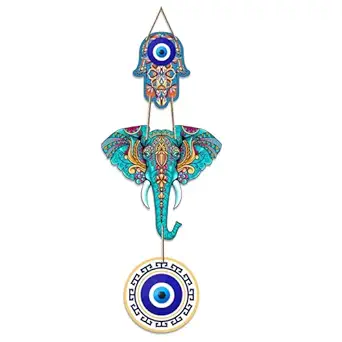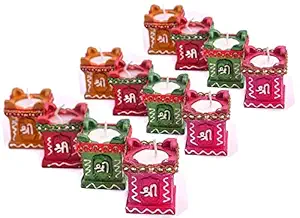शीर्षक: "राम और सीता का दिव्य प्रेम कथा: भक्ति और गुण की एक अतीत कहानी"
प्रस्तावना:
रामायण, हिन्दू मिथकों में सबसे पूज्य और प्यारी महाकाव्यों में से एक है, यह केवल वीरता और साहस की एक महाकाव्य कथा नहीं है; बल्कि यह एक समय-सीमित प्रेम कथा भी है जिसने पीढ़ियों के दिलों को कई पीढ़ियों से मोहित किया है। इस महाकाव्य के ह्रदय में भगवान राम और सीता की दिव्य प्रेम कथा है, एक प्रेम जो समय, परीक्षण और कठिनाइयों को पार करता है। इस ब्लॉग में, हम राम और सीता के अद्वितीय भक्ति और गुणों के गहराई में गुफाओं में जाएंगे और उनके प्रेम की गहराइयों को छूने का प्रयास करेंगे।
भाग 1: दिव्य मिलन
रामायण वीर और साहसी अयोध्या के राजकुमार राम और सुंदर और बराबरी वाली मिथिला की राजकुमारी सीता के दिव्य मिलन से शुरू होता है, दो आत्माएं जो एक साथ होने के लिए निर्धारित हैं। रामा, विर्तजन और वीर प्रिंस ऑयोध्या का और सीता, सुंदर और इसी तरह के योग्य परमपतिव्रता मिथिला की प्रिंसेस हैं, एक बड़े स्वयंवर समारोह के माध्यम से एक साथ आते हैं। रामा द्वारा भगवान शिव की दिव्य धनुर्धारण की अद्वितीय कठिनाइयों की यात्रा सीता की शादी के लिए जीत लेती है। यह शुभ शुरुआत उनकी अपने बड़े प्रेम कथा की यात्रा की शुरुआत करती है।
भाग 2: बर्बादी
हालांकि, उनकी खुशी बहुत कम समय तक रहती है क्योंकि राम ने न्याय की खोज में चालाक राजनीतिक षड्यंत्रों के कारण वन में चौदह वर्षों के लिए निष्कासित किया जाता है। सीता, अपने प्रिय पति के प्रति अपने प्रेम और भक्ति में असली बदलाव लाने का आलस्य नहीं बदलती है, और वन में अपने प्रिय के साथ जाने का चयन करती है। उनका प्यार उनकी बर्बादी के बावजूद, जब वे अपने निर्धारित समय में निर्धारित कठिनाइयों का सामना करते हैं, तो उनके बंधन को मजबूती से मजबूत कर देता है।
भाग 3: अपहरण
पूरी दिव्य प्रेम कथा का एक दु: खद टर्न आता है जब दैत्य राजा, रावण, सीता को हर लेता है। राम का दुख और अपनी प्रिय सीता को बचाने की उसकी संकल्पना उसके प्रेम और भक्ति की गहराइयों को दिखाती है। पूरे काव्य का परिप्रेक्ष्य रामा के अपनी प्रिय को वापस लाने के लिए उसके निरंतर पुरस्कार को घेरता है, जिससे दिखाया जाता है कि वह अपने प्रिय के लिए कितनी दूर जा सकते हैं।
भाग 4: सीता की अग्नि परीक्षा
रामायण के सबसे प्रतीकात्मक पलों में से एक है सीता की अग्नि परीक्षा, जिसमें वह अपनी शुद्धता और पतिव्रत्य को सिद्ध करने के लिए एक आग की परीक्षा का सामना करती हैं। सीता का असली भक्ति और शक्ति का प्रतीक बनाने के लिए उनकी असली प्रेम की शक्ति और शुद्धता को इस किस्से ने दिखाया।
भाग 5: मिलन
लम्बी और कठिन लड़ाई के बाद, रामा सीता को सफलतापूर्वक रावण के चंगुल से बचा लेते हैं। उनका मिलन खुशी और जश्न का पल है। उनका प्यार, कठिनाइयों के सामने भी, उनकी विश्वास और गुणों की मजबूतता का प्रमाण है।
निष्कर्षण:
राम और सीता का दिव्य प्रेम कथा आज भी दुनियाभर के दिलों को प्रेरित और बस में रखता है। इसका उदाहरण भक्ति, गुण, और अनवरत प्यार की महत्वपूर्ण उपादान है। यह महाकाव्य का सिखाता है कि वास्तविक प्यार सभी बाधाओं को पार करता है और परेशानियों के बावजूद भी टिकता है। राम और सीता की कहानी हमें प्यार की अद्वितीय शक्ति और भलाई की आपातकालीन प्राप्ति का आलम्ब है।
Introduction
Overview of Rama and Sita’s Love
The divine love story of Rama and Sita illustrates eternal devotion, mutual respect, and the sacred bond of dharma in marriage.
Significance
Their story represents ideal love, virtue, and loyalty, serving as a model for devotees and society.
Main Characters
Key figures include Lord Rama, Sita, King Janaka, and supporting characters who influence their journey.
Setting
The events unfold in Mithila, Ayodhya, and during exile in forests, highlighting different stages of their life.
Moral Lessons
The story teaches devotion, patience, respect, and adherence to dharma even in challenging circumstances.
Meeting and Courtship
First Encounter
Rama and Sita first meet at the Swayamvar, where Rama wins Sita’s hand by breaking Lord Shiva’s bow.
Marriage
The marriage signifies a sacred union guided by dharma, devotion, and divine blessings.
Early Relationship
Their early interactions highlight mutual respect, love, and the ideal conduct of a divine couple.
Family and Support
King Janaka and other elders support the union, emphasizing the importance of family and dharma in marriage.
Lessons
The initial stages of their relationship teach respect, patience, and the power of divine destiny.
Exile and Trials
Challenges During Exile
Rama and Sita face hardships during the forest exile, demonstrating resilience and devotion.
Abduction of Sita
Sita is abducted by Ravana, testing the strength of love, patience, and faith in divine justice.
Rama’s Devotion
Rama’s unwavering commitment and strategic actions highlight the power of devoted love and dharma.
Reunion
Rama and Sita’s reunion after trials exemplifies the triumph of love, virtue, and divine grace.
Lessons
The exile and trials teach patience, resilience, loyalty, and unwavering faith in righteousness.
Symbolism and Significance
Love as Dharma
The story symbolizes love as a moral and spiritual duty, aligned with dharma and virtue.
Divine Bond
Their relationship represents the eternal bond between the divine and human devotion.
Faith and Devotion
Faith and devotion guide their actions and protect them during trials, symbolizing divine support.
Moral Lessons
The story teaches that love, virtue, and patience are rewarded by divine justice and grace.
Inspiration
The narrative inspires devotees to uphold ethical love, righteousness, and loyalty in relationships.
Cultural Depictions
Art and Literature
The love story is celebrated in paintings, sculptures, literature, and poetry depicting divine romance.
Theater and Dance
Classical dances and dramas frequently portray episodes from their love story, emphasizing moral and spiritual lessons.
Regional Interpretations
Different regions illustrate the story through local art forms and cultural storytelling traditions.
Lessons
Cultural representations reinforce virtues of devotion, loyalty, patience, and moral conduct for devotees.
Global Influence
The divine love story of Rama and Sita continues to inspire art, literature, and spiritual teachings worldwide.
The divine love story of Rama and Sita illustrates eternal devotion, mutual respect, and the sacred bond of dharma in marriage.
Their story represents ideal love, virtue, and loyalty, serving as a model for devotees and society.
Key figures include Lord Rama, Sita, King Janaka, and supporting characters who influence their journey.
The events unfold in Mithila, Ayodhya, and during exile in forests, highlighting different stages of their life.
The story teaches devotion, patience, respect, and adherence to dharma even in challenging circumstances.
Rama and Sita first meet at the Swayamvar, where Rama wins Sita’s hand by breaking Lord Shiva’s bow.
The marriage signifies a sacred union guided by dharma, devotion, and divine blessings.
Their early interactions highlight mutual respect, love, and the ideal conduct of a divine couple.
King Janaka and other elders support the union, emphasizing the importance of family and dharma in marriage.
The initial stages of their relationship teach respect, patience, and the power of divine destiny.
Rama and Sita face hardships during the forest exile, demonstrating resilience and devotion.
Sita is abducted by Ravana, testing the strength of love, patience, and faith in divine justice.
Rama’s unwavering commitment and strategic actions highlight the power of devoted love and dharma.
Rama and Sita’s reunion after trials exemplifies the triumph of love, virtue, and divine grace.
The exile and trials teach patience, resilience, loyalty, and unwavering faith in righteousness.
The story symbolizes love as a moral and spiritual duty, aligned with dharma and virtue.
Their relationship represents the eternal bond between the divine and human devotion.
Faith and devotion guide their actions and protect them during trials, symbolizing divine support.
The story teaches that love, virtue, and patience are rewarded by divine justice and grace.
The narrative inspires devotees to uphold ethical love, righteousness, and loyalty in relationships.
The love story is celebrated in paintings, sculptures, literature, and poetry depicting divine romance.
Classical dances and dramas frequently portray episodes from their love story, emphasizing moral and spiritual lessons.
Different regions illustrate the story through local art forms and cultural storytelling traditions.
Cultural representations reinforce virtues of devotion, loyalty, patience, and moral conduct for devotees.
The divine love story of Rama and Sita continues to inspire art, literature, and spiritual teachings worldwide.


